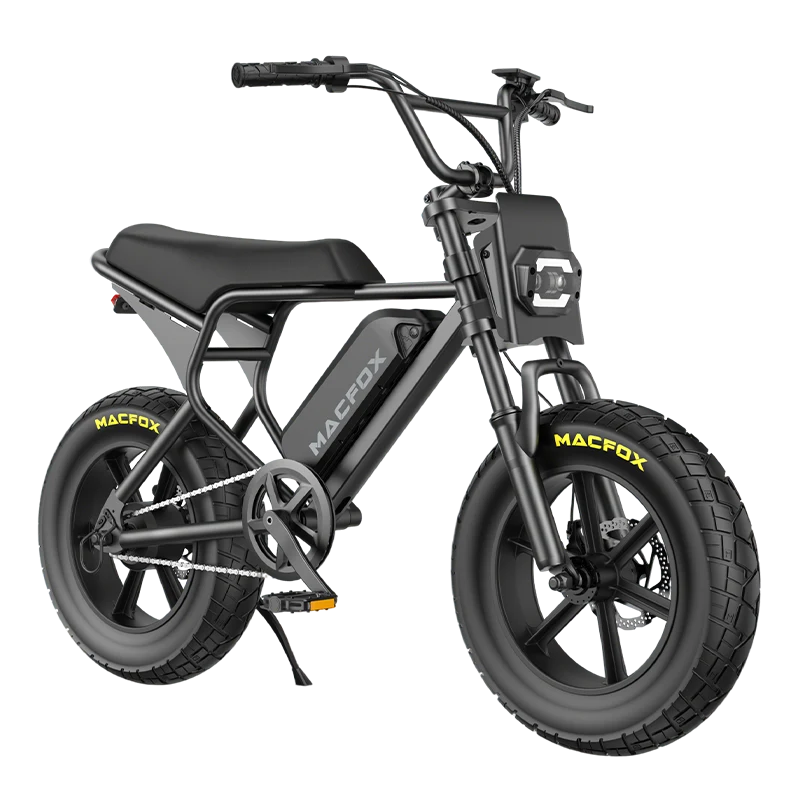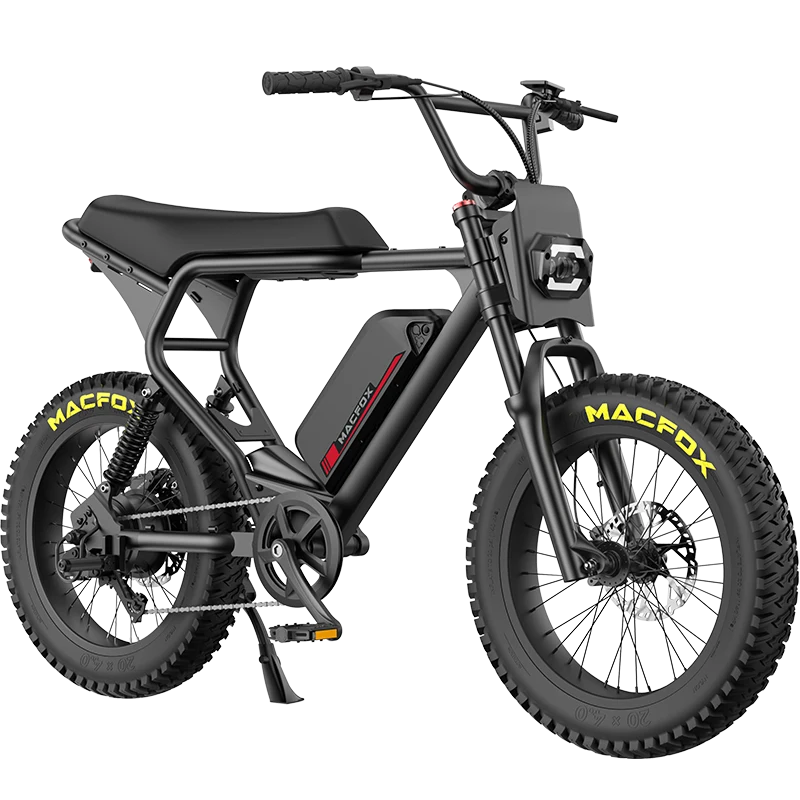The 2025 state-by-state e‑bike regulations are set to roll out soon, and anticipation is reaching new heights. One of the most debated topics is the updated approach to electric bike classifications and safety requirements. What exactly are the new rules and how will they impact riders and manufacturers?
This guide dives into every essential detail of the 2025 e‑bike regulatory changes—from updated power limits and helmet mandates to revised road access and licensing criteria. We’ll also offer practical tips and highlight the best practices for navigating the new rules, ensuring that whether you’re a seasoned rider or just starting out, you’ll be well-prepared to hit the road safely and legally.
Scroll down and select your state from the directory below to view the specific regulations that apply in your area.
Understanding E-Bike Classifications

It’s important to know the three main classes of e‑bikes before diving into state‑specific regulations:
-
Class 1 E-Bikes are only pedal-assist, without throttle. They have electric assistance up to 20mph.
-
Class 2 E Bikes: These bikes are equipped with a throttle-assisted motor, which can propel them to speeds of up to 20 miles per hour without the need for pedaling.
-
Class 3 E-Bikes are only pedal-assist, without throttle. The assistance is up to 28mph.
Most states have adopted this three‑tier classification to help navigate the differing laws.
Alabama E-Bike Regulations
In Alabama, electric bikes are classified the same as traditional bicycles. Riders must follow the following rules:
- Helmets must be worn by riders aged 16 and under.
- On sidewalks, e-bikes are not allowed.
- The minimum age for Class 3 ebike riders is 14 years.
Alaska E-Bike Laws
Alaska is a great place for e-bike lovers because of its vast landscapes. State regulations include:
- There are no age restrictions on e-bikes.
- On trails and bike paths, e-bikes of class 2 and 3 are not allowed.
- Helmets are mandatory for all e-bikers.
Arizona's approach to e-Bikes
Arizona's sunny climate is ideal for e-bikers, provided they follow the following rules:
- E-bikes can be treated the same as regular bicycles.
- Local ordinances can vary, but there are no helmet laws in place statewide.
- Class 3 ebikes cannot be used on paths or trails unless they are specifically permitted.
Arkansas E-Bike Regulations
Arkansas has adopted e-bike regulations, which include:
- E-bikes can be considered bicycles if they meet the federal definition.
- Helmets can be worn but are not required.
- There are no age restrictions on riding an e-bike.
California E-Bike Laws
California is a leader when it comes to e‑bike laws—and 2025 brings significant updates:
- Throttle Restrictions: The new law explicitly bans any throttle functionality on Class 3 e‑bikes.
- Motor Power Limits: Ambiguities regarding “continuous power” have been removed. Now, e‑bike motors must not exceed 750 W continuously.
- Helmet Requirements: Helmets must be worn by all riders under 18 and by all Class 3 e‑bike riders.
- Trail Use: The use of Class 3 e‑bikes on bike paths is restricted unless they are adjacent to a road.
- Additional regulations may be imposed by local jurisdictions.
Colorado's E-Bike Regulations
Colorado's mountains offer a unique experience to e-bikers, when they follow these rules:
- On paths and trails, e-bikes must be parked off the path or trail unless local authorities have given permission.
- Helmets are required for riders under 16.
- The use of Class 3 electric bikes is restricted to the road or bike lanes.
Connecticut E-Bike Laws
Connecticut's scenic roads are accessible for e-bikers, provided they follow these rules:
- Class 3 e-bikes cannot be used on bike paths or trails. Class 1 and 2 bikes are permitted.
- Helmets are required for riders under the age of 15.
- Municipalities may impose additional restrictions.
Delaware's E-Bike Approach
Delaware has a welcoming environment for riders of e-bikes, including regulations such as:
- E-bikes can be treated the same as regular bicycles.
- Helmets should be worn by all cyclists.
- There are often different rules in each state park, particularly.
Florida E-Bike Regulations
Florida's warm weather is ideal for e-bike lovers, as long as they follow these laws.
- E-bikes can be classified as bicycles and do not require a license.
- Helmets must be worn by riders aged 16 and under.
- E-bikes can be ridden on the roads, bike lanes and multi-use paths.
Georgia E-Bike Laws
E-bikes in Georgia are regulated the same as traditional bicycles.
- E-bikes do not require any licensing or registration.
- Helmets are strongly recommended for all riders.
- E-bikes can be used on the road and on bike paths, but are prohibited on the sidewalk.
Hawaii E-Bike Regulations
Hawaii is a special place for electric bike riders.
- E-bikes fall under the same law as traditional bicycles.
- Helmets must be worn by riders aged 16 and under.
- Class 3 ebikes can only be used on the road.
Comply with state legal standards off road electric bike:
| https://macfoxbike.com/products/macfox-x2 |
Idaho's approach to e-Bikes
Idaho's varied landscapes make it a great place for e-bike lovers:
- E-bikes can be treated like bicycles and do not require a special license.
- Local ordinances can differ, but there are no helmet laws in the state.
- On most roads and bikeways, e-bikes are permitted.
Illinois E-Bike Laws
Illinois has e-bike regulations that cater to e-bikers:
- E-bikes fall under the same rules as bicycles.
- Helmets can be worn but are not required.
- Certain trails and paths are off limits to Class 3 ebikes.
Indiana E-Bike Regulations
Indiana has laws that encourage the use of e-bikes.
- E-bikes do not require any special registration or licensing.
- Helmets are recommended for all riders.
- E-bikes can be ridden on the road, in bike lanes and certain trails.
Iowa's E-Bike Laws
Iowa is a welcoming environment for electric bike riders.
- E-bikes can be classified in the same way as traditional bicycles.
- There is no mandatory helmet law, but safety is encouraged.
- On most roads and bikeways, e-bikes are allowed.
Kansas E-Bike Regulations
Kansas regulates electric bikes under the following guidelines:
- The e-bikes do not require a license and are treated the same as regular bicycles.
- Helmets should be worn by all riders, but especially younger ones.
- On roads and designated bicycle paths, e-bikes are permitted.
Kentucky's E-Bike Approach
Kentucky's laws on e-bikes include:
- E-bikes can be considered as bicycles and do not require a special license.
- Helmets are strongly recommended for all riders.
- E-bikes can be ridden on the road, in bike lanes and certain trails.
Louisiana E-Bike Laws
Louisiana e-bikers must follow these rules:
- E-bikes can be classified as bicycles.
- Helmets must be worn by riders aged under 17.
- On roads, bikeways, and some parks, e-bikes are permitted.
Maine E-Bike Regulations
Maine's scenic routes offer a great opportunity for e-bikers, thanks to laws that include:
- E-bikes can be treated the same as regular bicycles.
- Safety is a major reason to wear a helmet.
- On most roads and paths, e-bikes can be ridden.
Related Reading: How to Plan an Eco-Friendly eBike Tour
Maryland E-Bike Laws

Maryland e-bike laws include:
- E-bikes can be classified as bicycles and do not require a license.
- Helmets must be worn by all riders aged under 16.
- Certain bike trails and paths are off limits to Class 3 ebikes.
Massachusetts E-Bike Regulations
Massachusetts has a set of guidelines for riders of electric bikes:
- E-bikes must comply with the same laws that apply to traditional bicycles.
- Helmets are required for riders under 17.
- Some local jurisdictions have specific rules regarding the use of e-bikes.
Michigan's approach to e-Bikes
Michigan has a set of regulations for e-bikers:
- Three classes of e-bikes exist.
- Helmets should be worn by all cyclists, but especially Class 3 ebikes.
- Most roads and bike lanes allow e-bikes.
Minnesota E-Bike Laws
Minnesota's ebike laws include
- E-bikes can be considered as bicycles.
- There is no mandatory helmet law, but safety is encouraged.
- You can use e-bikes on the road and bike paths.
Mississippi E-Bike Regulations
The following regulations apply to e-bikes in Mississippi:
- E-bikes and traditional bicycles are both treated as the same.
- No state-wide helmet laws.
- On roads and bikeways, e-bikes can be ridden.
Missouri's E-Bike Laws
Missouri is a friendly environment for electric bike riders.
- E-bikes can be classified in the same way as bicycles.
- Helmets are recommended for all riders.
- E-bikes can be ridden on the road, in bike lanes and on certain trails.
Montana E-Bike Regulations
Montana's regulations on e-bikes include the following:
- E-bikes do not require a special license.
- There are no helmet laws in the state, but safety is encouraged.
- On roads and bike trails, e-bikes are permitted.
Nebraska's approach to e-Bikes
Nebraska e-bikers must follow these rules:
- E-bikes can be classified as bicycles.
- Helmets are not mandatory, but they are strongly encouraged.
- On most roads and bikeways, e-bikes are allowed.
Nevada E-Bike Laws
Nevada's ebike laws include
- E-bikes and traditional bicycles are both treated as the same.
- Helmets should be worn by all cyclists.
- E-bikes can be ridden on designated trails, bike lanes and roads.
New Hampshire E-Bike Regulations
New Hampshire has these guidelines for electric-bike riders.
- E-bikes can be classified in the same way as traditional bicycles.
- Helmets should be worn by all riders, but especially younger ones.
- On certain bike paths and roads, e-bikes can be used.
New Jersey E-Bike Laws
New Jersey e-bike laws include:
- E-bikes must comply with the same laws that apply to traditional bicycles.
- Helmets are required for riders under 17.
- Certain bike trails and paths are off limits to Class 3 ebikes.
New Mexico E-Bike Regulations
New Mexico's e-bike policy is as follows.
- E-bikes can be used as normal bicycles without requiring any special license.
- There are no helmet laws in the state, but safety is still recommended.
- On most roads and bikeways, e-bikes are permitted.
New York E-Bike Laws
New York's ebike laws include a detailed list of provisions.
- Three classes of e-bikes exist.
- All Class 3 ebike riders, and those aged under 18, must wear helmets.
- E-bikes can be ridden on the road, in bike lanes and on certain paths.
Electric commuter bike that meets national legal standards:
| https://macfoxbike.com/products/macfox-x1 |
North Carolina E-Bike Regulations
North Carolina has the following regulations regarding e-bikes:
- E-bikes can be considered as bicycles.
- Helmets must be worn by riders aged 16 and under.
- E-bikes can be ridden on the road, in bike lanes and on certain trails.
North Dakota E-Bike Laws
North Dakota has a set of regulations that caters to e-bikers:
- E-bikes and traditional bicycles are both treated as the same.
- Helmet laws are not mandatory in all states, but riders should wear them.
- On roads and designated bicycle paths, e-bikes are permitted.
Ohio E-Bike Regulations
Ohio's approach towards e-bikes includes
- E-bikes can be classified in the same way as bicycles.
- Helmets are recommended for all riders, but especially young ones.
- On most roads and bikeways, e-bikes are allowed.
Oklahoma E-Bike Laws
Oklahoma e-bikers must follow these rules:
- E-bikes can be treated like bicycles and do not require a special license.
- There is no mandatory helmet law, but safety is still recommended.
- E-bikes can be ridden on the road, in bike lanes and on certain trails.
Oregon E-Bike Regulations
Oregon, a state known for its bicycle‑friendly cities, has updated its regulations in 2025:
- E‑bikes remain classified as bicycles; however, Oregon now prohibits throttles on Class 3 e‑bikes and limits the continuous motor output to 750 W.
- Helmets must be worn by riders aged 16 and under.
- E‑bikes can be ridden on designated paths, bike lanes, and roads, subject to local restrictions.
Pennsylvania E-Bike Laws
Pennsylvania's ebike regulations include
- E-bikes can be considered as bicycles.
- Helmets are required for riders under the age of 12.
- E-bikes can be ridden on the road, in bike lanes and certain bike paths.
Rhode Island E-Bike Laws
Rhode Island has the following e-bike laws:
- E-bikes fall under the same law as traditional bicycles.
- Helmets should be worn by all riders, but especially those aged under 16.
- On most roads and bikeways, e-bikes are permitted.
South Carolina E-Bike Regulations
South Carolina's e-bike policy includes:
- E-bikes do not require a special license.
- There are no helmet laws in the state, but safety is encouraged.
- E-bikes can be ridden on the road, in bike lanes and on certain trails.
South Dakota E-Bike Laws
South Dakota e‑bikers must follow these rules:
- E‑bikes and traditional bicycles are both treated as the same.
- There is no mandatory helmet law, but riders are encouraged to wear helmets.
- On roads and designated bicycle paths, e‑bikes are permitted.
- Note: Class 3 e‑bikes are not allowed on bike paths.
Tennessee E-Bike Regulations
Tennessee has a friendly environment for electric bike riders.
- E-bikes can be classified in the same way as bicycles.
- Helmets are recommended for all riders, but especially those aged under 16.
- On most roads and bikeways, e-bikes are allowed.
Texas E-Bike Laws
The following are the e-bike laws in Texas:
- E-bikes must comply with the same laws that apply to traditional bicycles.
- Helmets are required for riders under 18.
- E-bikes can be ridden on the road, in bike lanes and certain designated paths.
Utah's approach to e-Bikes
Utah's regulations for e-bikers:
- Three classes of e-bikes exist.
- There are no helmet laws in the state, but safety is encouraged.
- On most roads, in bike lanes and on certain trails, e-bikes are permitted.
Vermont E-Bike Laws
Vermont's laws on e-bikes include:
- E-bikes can be treated the same as regular bicycles.
- Helmets should be worn by all riders, but especially those aged under 16.
- On certain bike paths and roads, e-bikes can be used.
Virginia E-Bike Regulations
The regulations in Virginia for e-bikes include:
- E-bikes can be considered as bicycles.
- There is no mandatory helmet law, but riders are encouraged by the government to wear helmets.
- E-bikes can be ridden on the road, in bike lanes and on certain trails.
Washington E-Bike Laws
Washington treats e‑bikes the same as traditional bicycles, with these updates in 2025:
- Helmets are required for riders under 17.
- E‑bikes can be ridden on designated paths, bike lanes, and roads.
- New Incentive Program: In April 2025, Washington launched the “WE‑Bike” rebate program offering up to $1,200 in rebates for qualifying low‑income residents on new electric bicycles.
- Local jurisdictions may impose additional restrictions.
West Virginia E-Bike Regulations
West Virginia's ebike laws are comprehensive and include:
- Three classes of e-bikes exist.
- Helmets must be worn by riders under the age of 15.
- E-bikes can be ridden on the road, in bike lanes and certain designated paths.
Wisconsin E-Bike Laws
Wisconsin e-bikers must follow these rules:
- E-bikes can be treated like bicycles and do not require a special license.
- There are no helmet laws in the state, but safety is still recommended.
- E-bikes can be ridden on the road, in bike lanes and on certain trails.
Wyoming's approach to e-Bikes
Wyoming has a set of regulations for e-bikers:
- E-bikes can be classified in the same way as bicycles.
- Helmets are recommended for all riders, but especially young ones.
- On most roads and bikeways, e-bikes are allowed.
Conclusion

Navigating the 2025 state-by‑state e‑bike regulations is essential for enthusiasts and commuters alike.
Understanding these regulations ensures a safe, legal, and enjoyable e‑biking experience.
While the three‑tier classification remains the standard, key updates—such as the throttle ban for Class 3 e‑bikes and clarified 750 W motor limits in California and Oregon, as well as new rebate initiatives in Washington—underscore the evolving regulatory landscape.
As e‑bikes continue to grow in popularity, staying informed about these changes is crucial for every rider.
FAQs
What is the most common e-bike regulation across states?
The most common regulation is the classification of e-bikes into three classes, with varying restrictions based on these classes.
Are helmets mandatory for e-bike riders in all states?
Helmet laws vary by state. Some states require helmets for all riders, while others mandate them only for riders under a certain age.
Can e-bikes be ridden on sidewalks and trails?
This depends on the state and local regulations. Some states allow e-bikes on sidewalks and trails, while others restrict them to roads and bike lanes.


















